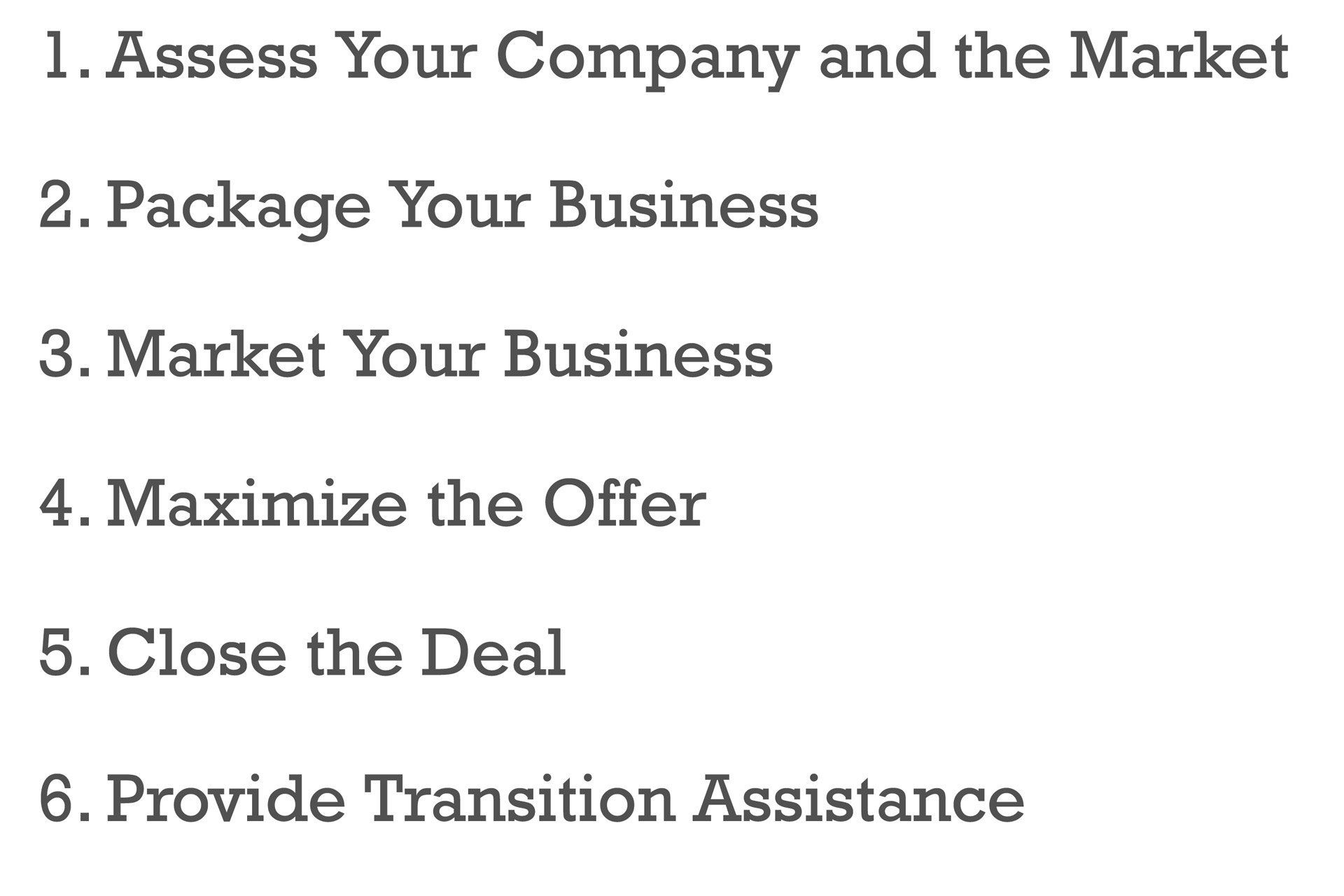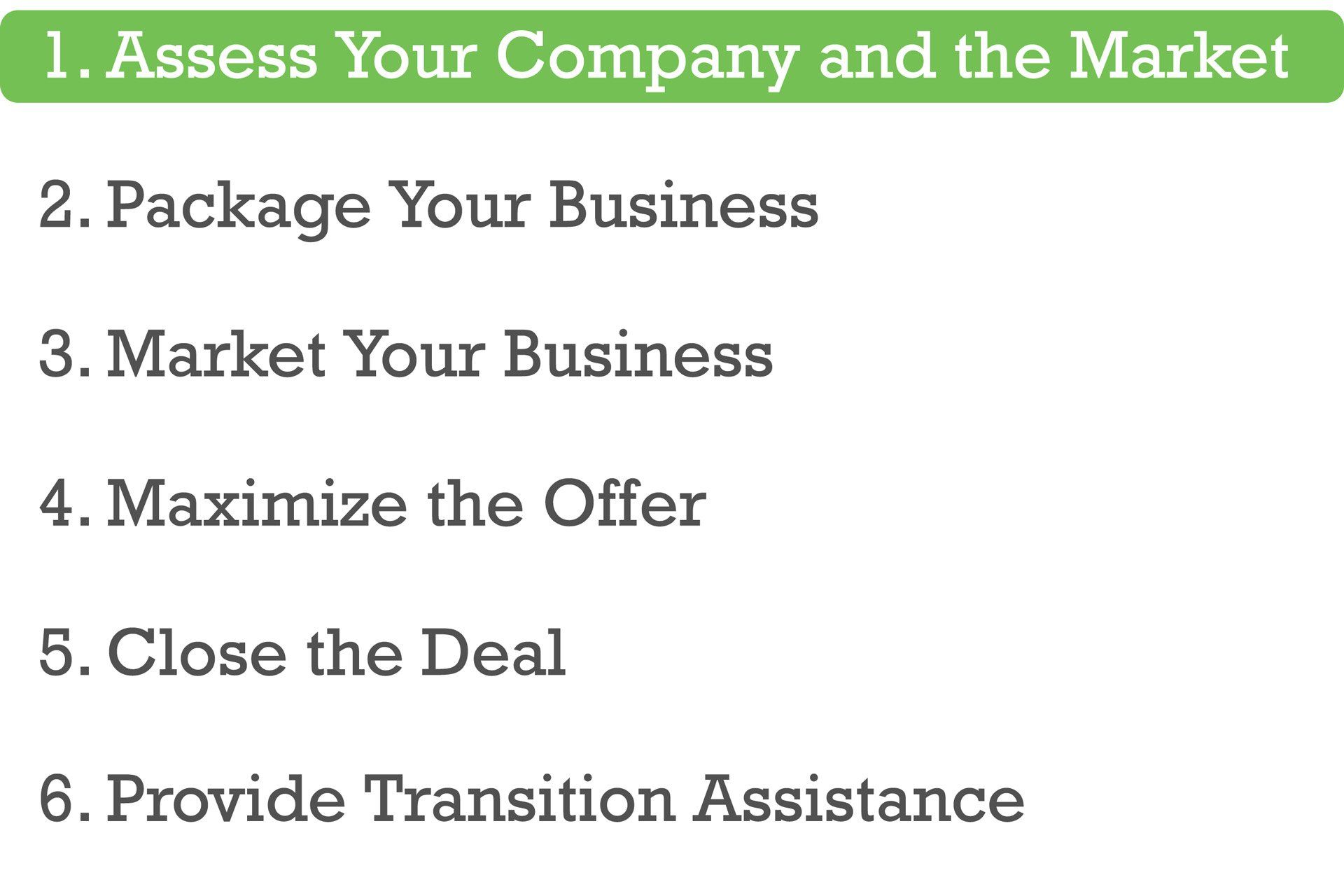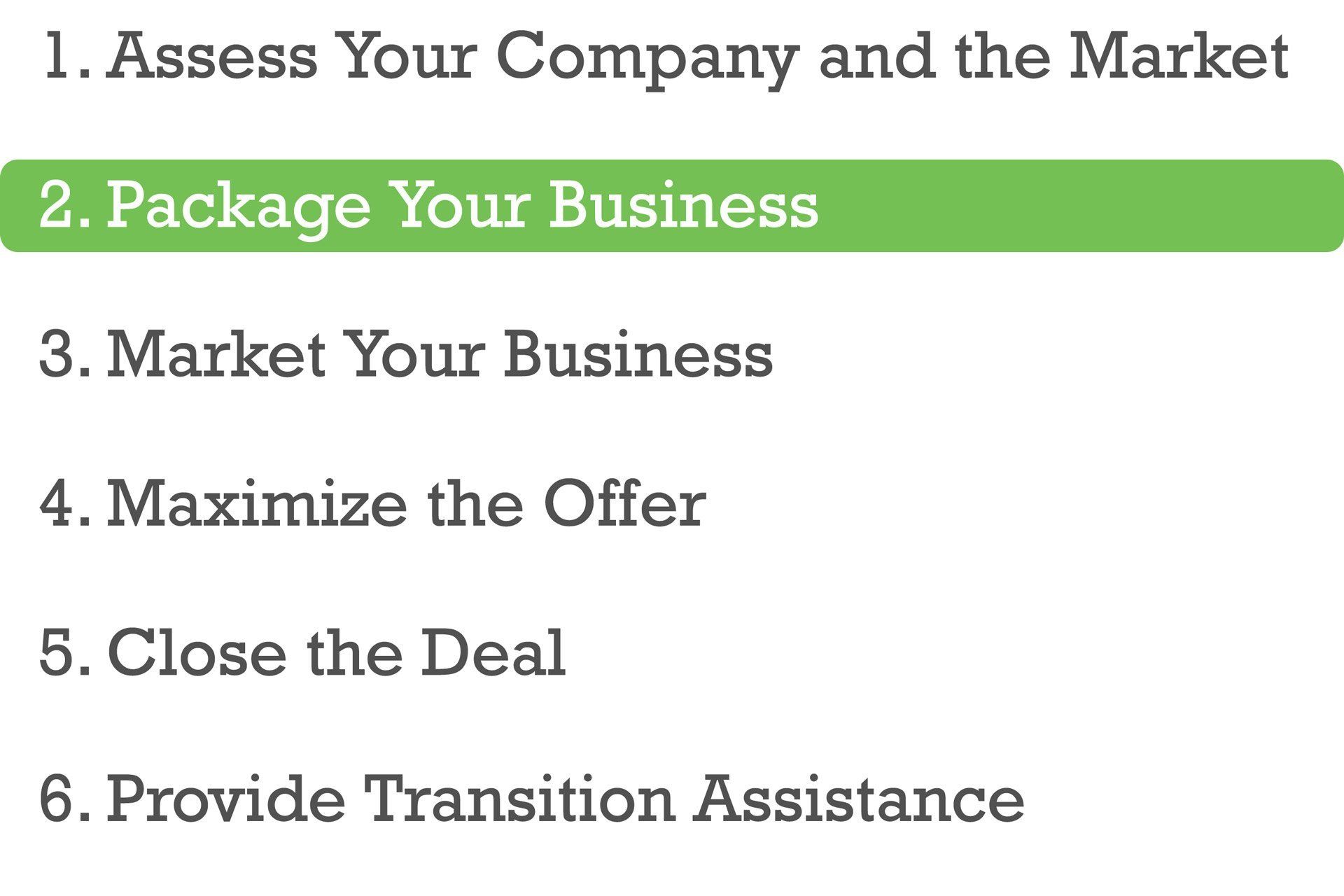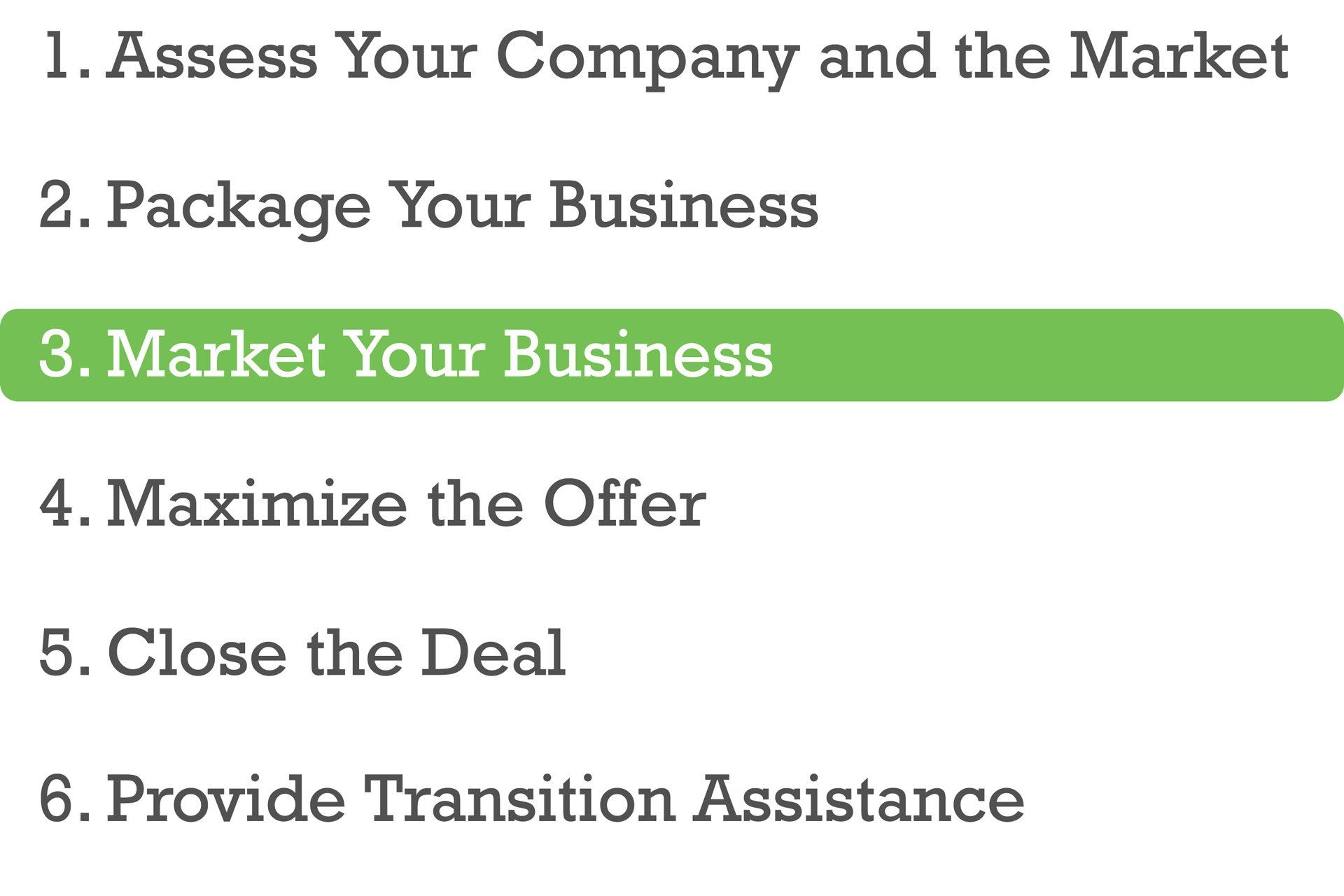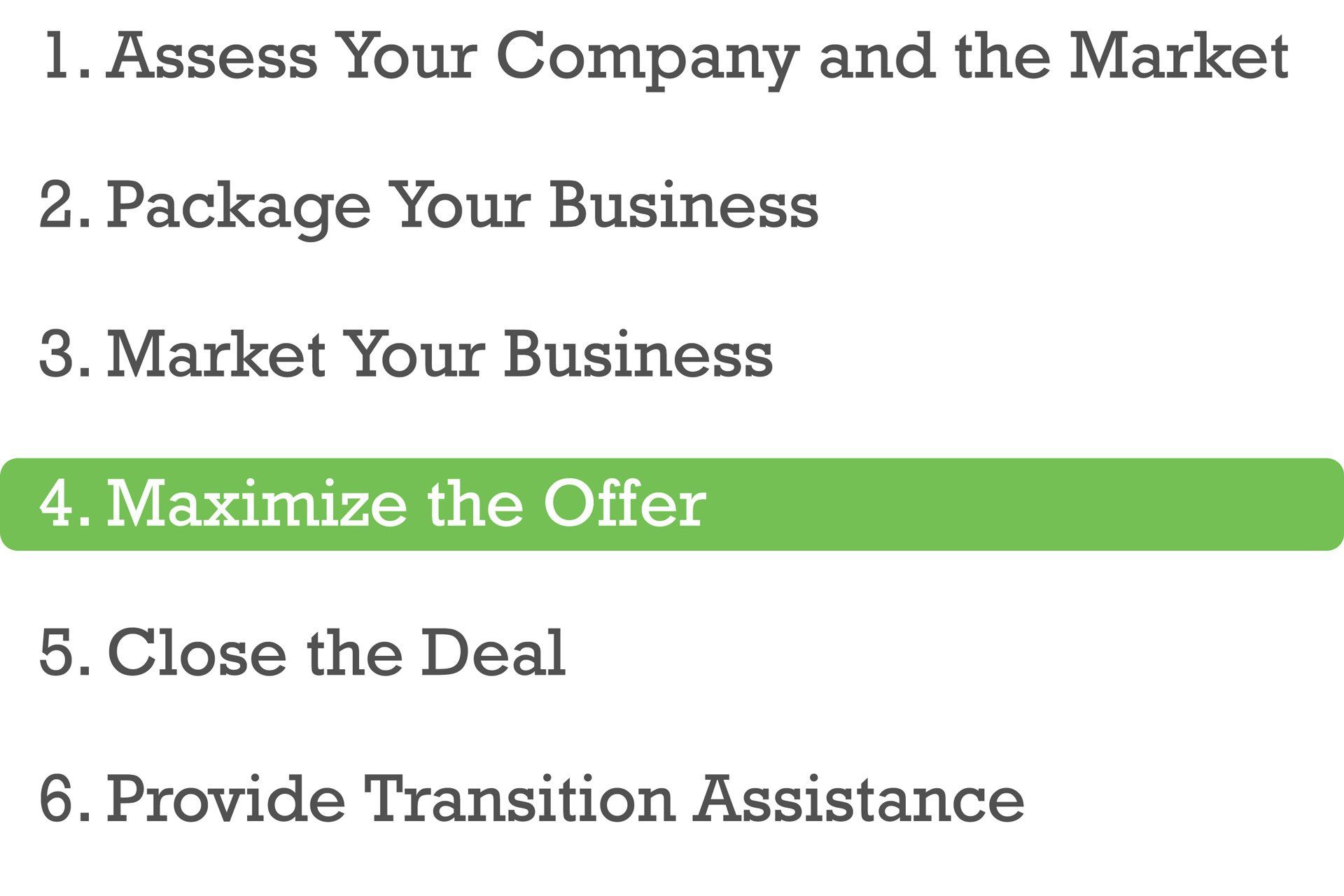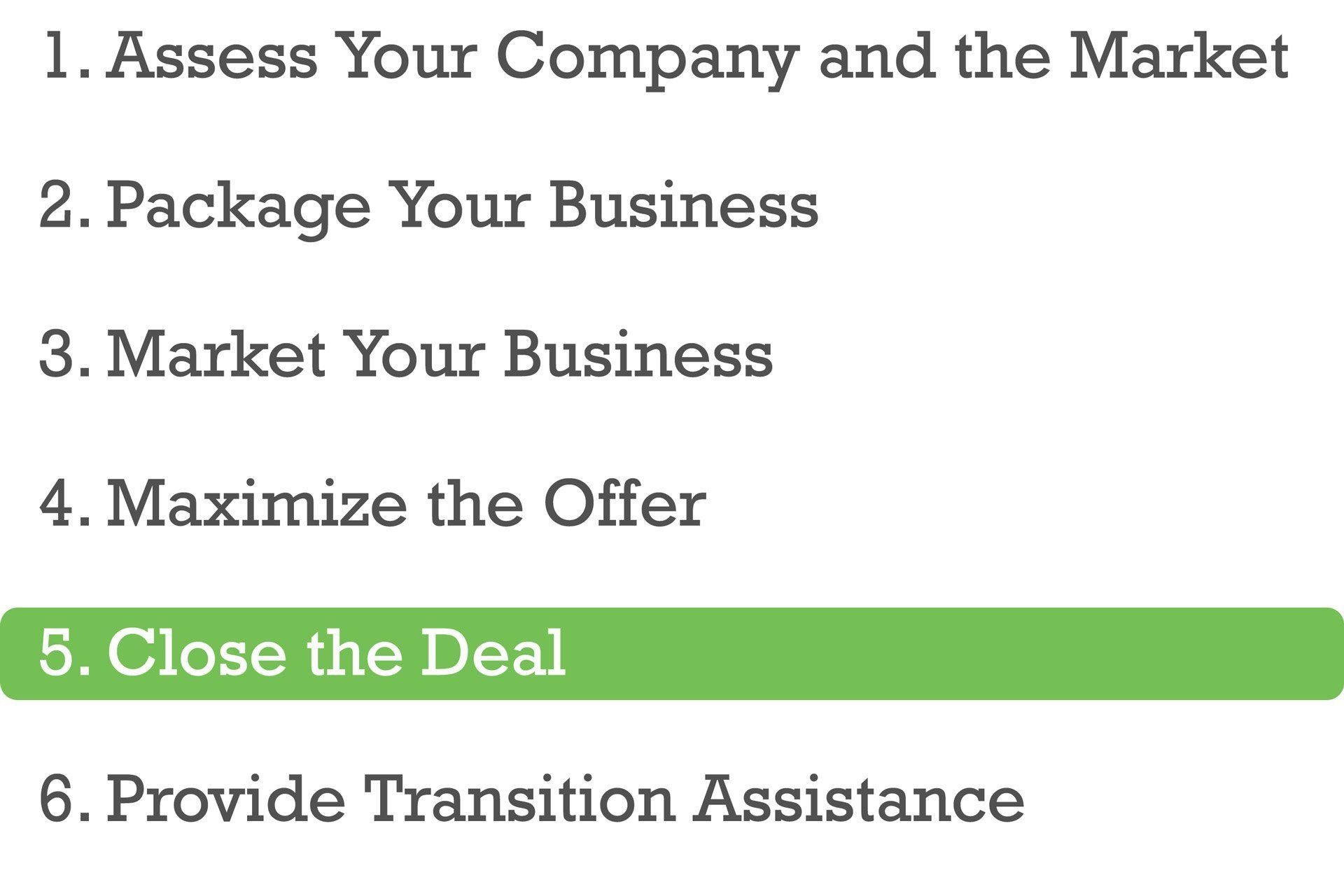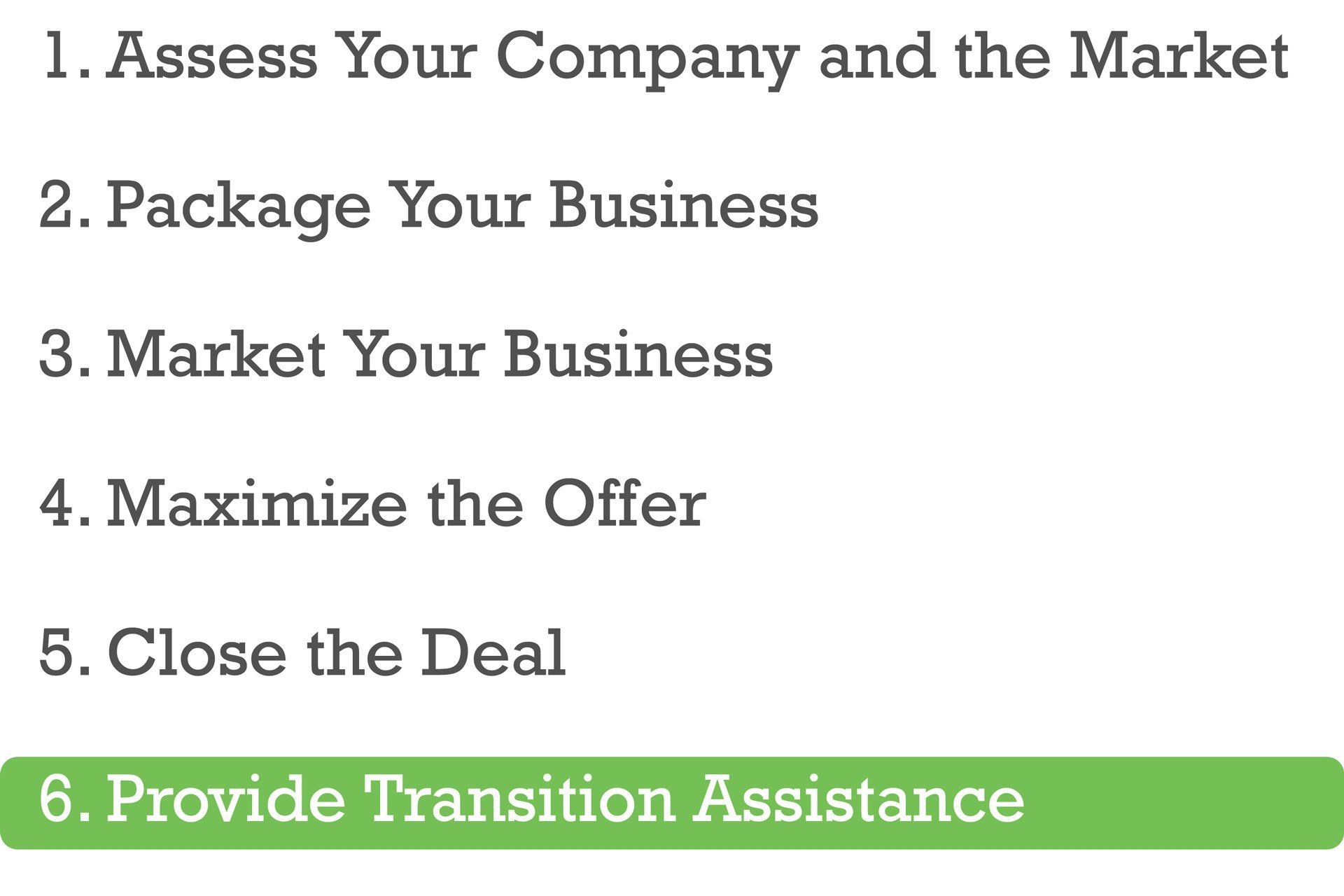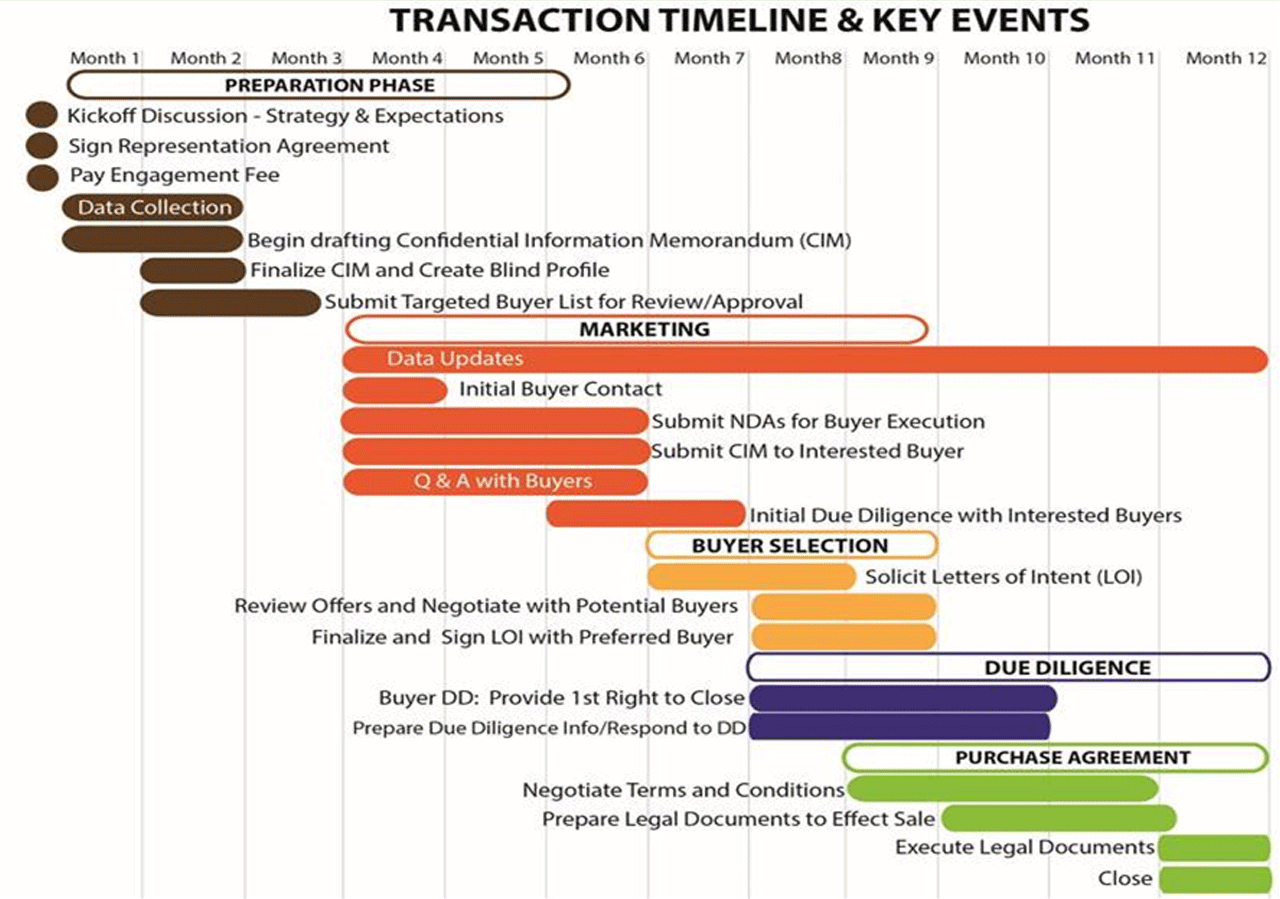Selling Your Business
Marketing and Selling Your Business
The IBG Fox & Fin Process™
In an industry where only one in five businesses marketed is actually sold, Fox & Fin’s closing rate of profitable business sales is more than three times the M&A industry average.
You Are in Charge. The stakes in most business sales and acquisitions are extremely high, and in many cases, truly life shaping. With stakes this important, it is vital that you are in charge throughout the process.
Do you need to do the work? Of course not; that’s our
job. But at IBG/Fox & Fin, we are convinced that, with your business on the line, you must make the key decisions throughout the process. We believe that taking direction from you is best facilitated by two guidelines to which we strictly adhere: making sure that you clearly understand every stage of the sale process, and keeping you informed at all times.
Helping you anticipate developments, accurately interpret the latest information, explore your options, and examine similar situations are all invaluable IBG/Fox & Fin services that support your decision making. In short, IBG/Fox & Fin is dedicated to educating and empowering you in producing the best possible outcome.
The Process: Six Key Steps
1. Assessing Your Company and the Market
Once we have examined your options in selling, you have the facts you need to decide on your next step.
Our assessment helps you answer key questions:
- What is the market for my business?
- Who are the likely buyers for my business?
- Will the sale of my business at this time accomplish my objectives … or should I wait?
- What is the best price I am likely to get?
- Will I need to offer financing to the buyer?
The assessment is designed to give you the information you need to make an informed decision about whether to sell or hold, and what business changes will yield the largest increase in value.
The components of the assessment include:
A. Calculating Business Value.
Business valuation requires in-depth knowledge and a strong dose of practical experience. Our value calculations reflect both the textbook version and the reality of today’s M&A marketplace. It considers what similar businesses have sold for and the availability and cost of financing for a potential buyer. Based on that, we then calculate the range of offers your business will likely receive.
B. Identifying Seller Options.
This component identifies and evaluates your key options:
- selling all, or part, of your business;
- growing your business to increase its value; or
- holding to optimize market timing.
We identify the pros and cons of each option and how each affects value. Once we have examined your options in selling, you have the facts you need to decide on your next step: whether it’s time to go, or time to grow. If you decide to sell your business with the assistance of IBG/Fox & Fin, we will ask you to sign a representation agreement and proceed through the remaining steps of The IBG/Fox & Fin Process.
C. Looking at Your Business Through a Buyer’s Eyes.
Businesses sell when both buyer and seller agree on a price. That’s why it’s important to understand the buyer’s viewpoint when he looks at your business. Will he see the same value you do? Possibly more? Perhaps less? Our review examines your business from that viewpoint. We study the key operating characteristics of your company, its market, and its competitors to identify key strengths, opportunities and risks.
2. Packaging
Your Business
We begin by examining those aspects of your company a "best fit" buyer will find most attractive. Then we faithfully recast your financial statements to show your company’s true earnings, in a way that appeals to buyers.
In many cases, your best buyer is not one who is currently looking to buy. To attract these buyers, our experience tells us that two things must be communicated: complete accurate information and a compelling claim of value.
Value is in the eye of the beholder. As a result, we begin by examining those aspects of your company a "best fit" buyer will find most attractive. We then create a narrative that highlights your company’s unique value drivers, while at the same time bridging areas that may be viewed as potential risks. We position your business by packaging it properly. Your business has a story behind it – an interesting story – and packaging involves telling that story, both in summary and in detail, in the following “chapters”:
- Confidentiality Notice
- Executive Summary
-
Company History - Customers
- Marketing Strategy
- Products, Operations & Technology
- Personnel
- Facilities & Leasing
- Competition
- Growth Opportunities
- Financial Overview
- Industry Overview and Analysis
We faithfully recast your financial statements to show your company’s true earnings, in a way that appeals to your best-fit buyers. We make sure that all claims are based on facts … that they are consistent throughout … and that all of the material facts are included. We also build credibility by creating professional marketing materials that are well written and designed – because most buyers, for better or worse, do judge a book by its cover.
3. Marketing Your Company
We don’t rely on passive methods. We put your company in front of potential best-fit buyers in the most direct way.
To sell your business for maximum value, locating “best fit” buyers is a critical step. A best-fit buyer is one who will place the highest value on your company. These buyers are other companies or individual investors who are a good match for your business and, at the same time, find your business to be a good match for them. This leads us to analyze basics such as industry, size and financial strength, as well as more strategic factors like product strengths, competitive position and management capability. The goal of our search: to leave no stone unturned. Once we have list of likely best-fit buyers, we develop marketing strategies to reach them.
While it is natural to assume that it is important to determine, in advance, the proper asking price for your company, in many cases it is in your best interests to go to market without an asking price.
Here’s why:
The value of your company may vary substantially from one buyer to another, depending largely on what type of buyers we identify (e.g., financial buyers, strategic/synergistic buyers, industry buyers [i.e., a buyer from your industry]). Also, your business may, on the surface, appear equally appealing to Buyer A and Buyer B. But its value may be significantly greater to Buyer A because Buyer A has a unique need for one of your services, products, customer groups, distribution networks , etc., that is of relatively little value to Buyer B. Buyer A is your “best fit” buyer, and finding your best-fit buyer is a core strength of IBG/Fox & Fin.
We put your company in front of potential best-fit buyers in the most direct way. We don’t follow a one-size-fits-all approach, such as relying only on passive methods (e.g., websites or ads in newspaper or trade publications).
Instead, we seek ways to contact your best-fit buyers directly. Some of our communication tools include direct mail, Internet marketing and our extensive networking contact base. In certain cases, we may test different approaches to identify the best option. Once we identify the tools that best reach your buyers, we create a marketing plan that details the timing and frequency of our contacts. Once you’ve approved the plan, we put it into action.
4. Maximizing the Offer
Key to getting maximum value for a company is not to find just one buyer for a company, but to create a ‘market’ with multiple buyers bidding for it.
IBG/Fox & Fin differs from many members of the M&A industry by placing a high priority on filtering out bad buyers. We don’t hasten to bring buyer and seller together “just to see what happens,” and we don’t waste your time meeting with buyers that we do not believe will be a good fit.
Before we give a prospect too much information or present a prospect to you, we try to determine for you their motivations, operational fit, financial capacity, and, if it’s important to you, your “cultural” compatibility (i.e., business philosophies, attitudes toward employees and customers, etc.). We also try to weed out buyers that have post-closing expectations that are irreconcilable with yours (for example, you may want to leave the company immediately after closing, while the buyer may want you to stay on for an extended time).
Key to getting maximum value for a company is not to find just one buyer for a company, but to create a ‘market’ with multiple buyers bidding for it. The goal is to generate multiple, high-quality, high-value offers and allow the buyers to bid up the price.
Maintaining confidentiality is critical during this step. The process of selling a business is difficult enough without wasting time on buyers who are merely kicking tires or lack the resources to close the deal. We do not disclose information that specifically identifies your company until we are confident a buyer is truly interested and has agreed, in writing, to maintain confidentiality.
Once we have identified the most promising buyers, we work with each one to answer questions, highlight advantages and do everything possible to nurture their interest in your company.
5. Closing the Deal
We keep advisors on schedule, ensure communication stays open between all parties and ultimately facilitate the closing where the exchange of value takes place.
Once there is a meeting of the minds, there is still much to be done before the deal closes. For example, you may agree on price and terms, but you haven’t agreed on attribution of value, which can dramatically affect the ultimate value of the deal through the tax consequences. Although much information has been exchanged at this point, the buyer is still trying to determine whether your business stands up to close scrutiny. Many deals can fail at this stage as a result of unexpected issues and misunderstandings, particularly in the area of representations and warranties.
IBG/Fox & Fin’s professional expertise minimizes the risk of such last-minute difficulties. How? We begin by properly sequencing all process steps to build commitment and maintain the highest level of confidentiality. We then vigilantly scan the horizon to anticipate problems and quickly respond with creative solutions that keep the deal on track. And we keep advisors on schedule, ensure communication stays open between all parties and ultimately facilitate the closing where the exchange of value takes place.
Our management of the due diligence process also includes anticipating and understanding what the buyer is asking for and how to respond. The buyer may ask for something that seems harmless, but our experience helps us see that request for the red flag that it is. Conversely, the buyer’s reasonable request may seem, to the seller, unreasonable and outrageous, but we can help the seller recognize why the request is important to the buyer and why it poses no threat to the seller.
From start to finish, we remain committed to realizing our clients’ goals: by thoroughly and methodically utilizing this proven process, clients directly benefit from our decades of experience, professionalism and integrity.
6. Transition
Assistance
IBG/Fox & Fin’s valuable services don’t end when closing documents are signed.
We care about successful deals, after the close.
IBG/Fox & Fin:
- Helps prevent lawsuits, by facilitating post-close disputes.
- Provides transition assistance to make sure that the buyer's takeover of the business is successful.
- Can help you introduce the new owner to your employees.
- Can alleviate the concerns of customers and suppliers who fear that the new ownership will not sustain the previous owner’s level of reliability.
- Can recommend professionals to assist in the transition of payroll records, accounting systems and technology.


